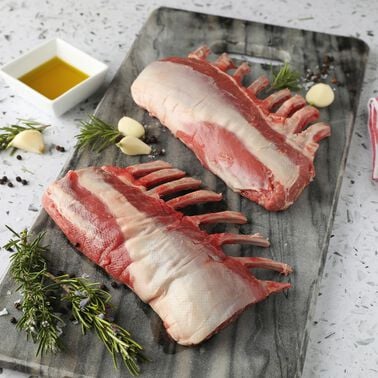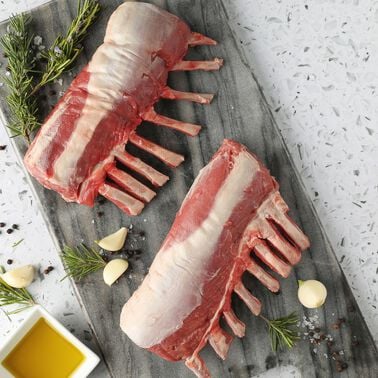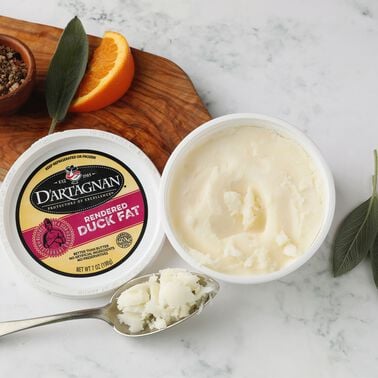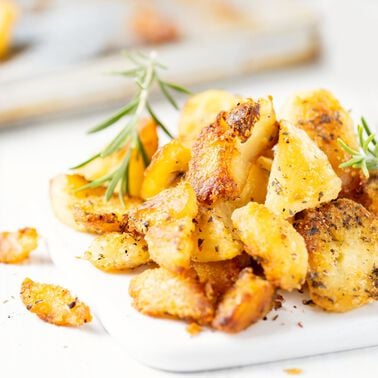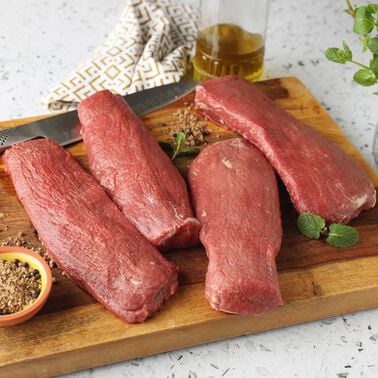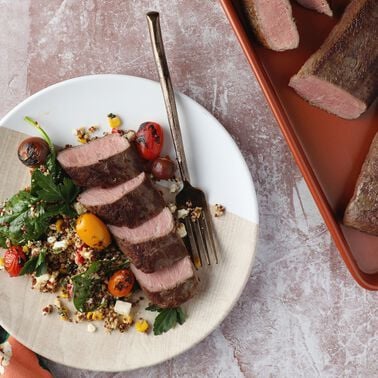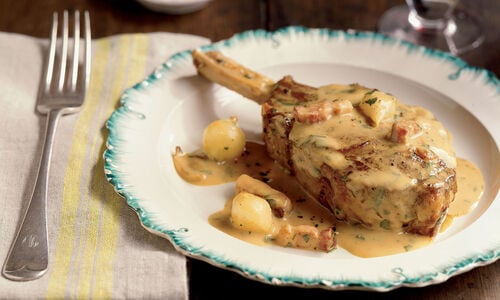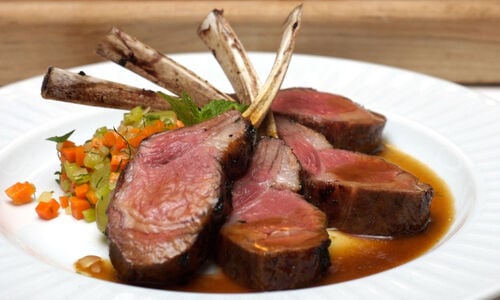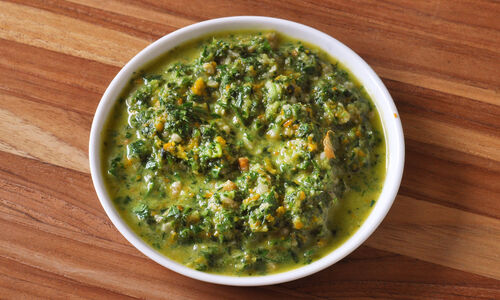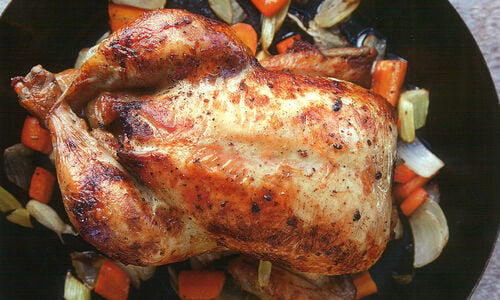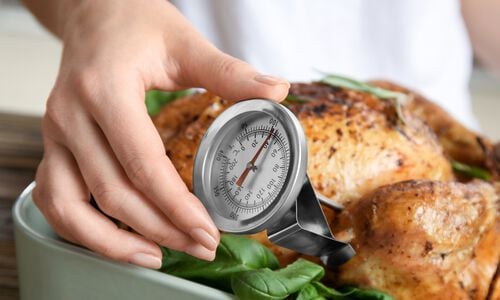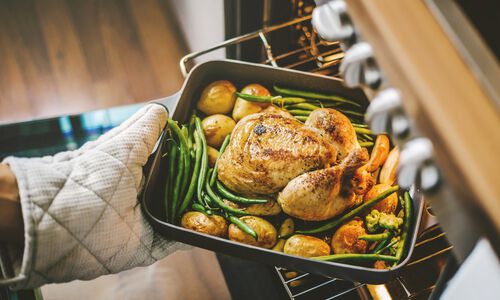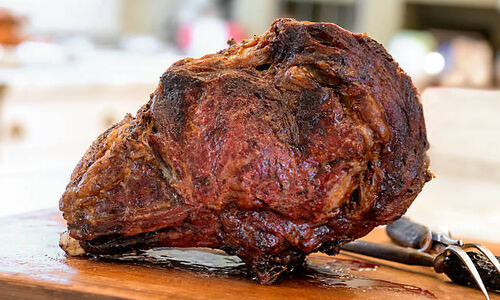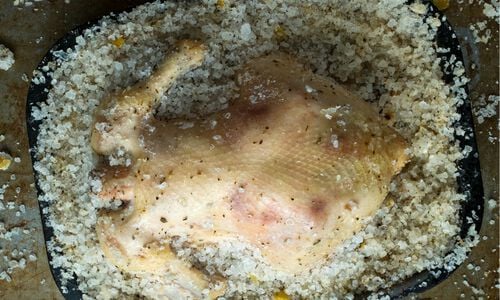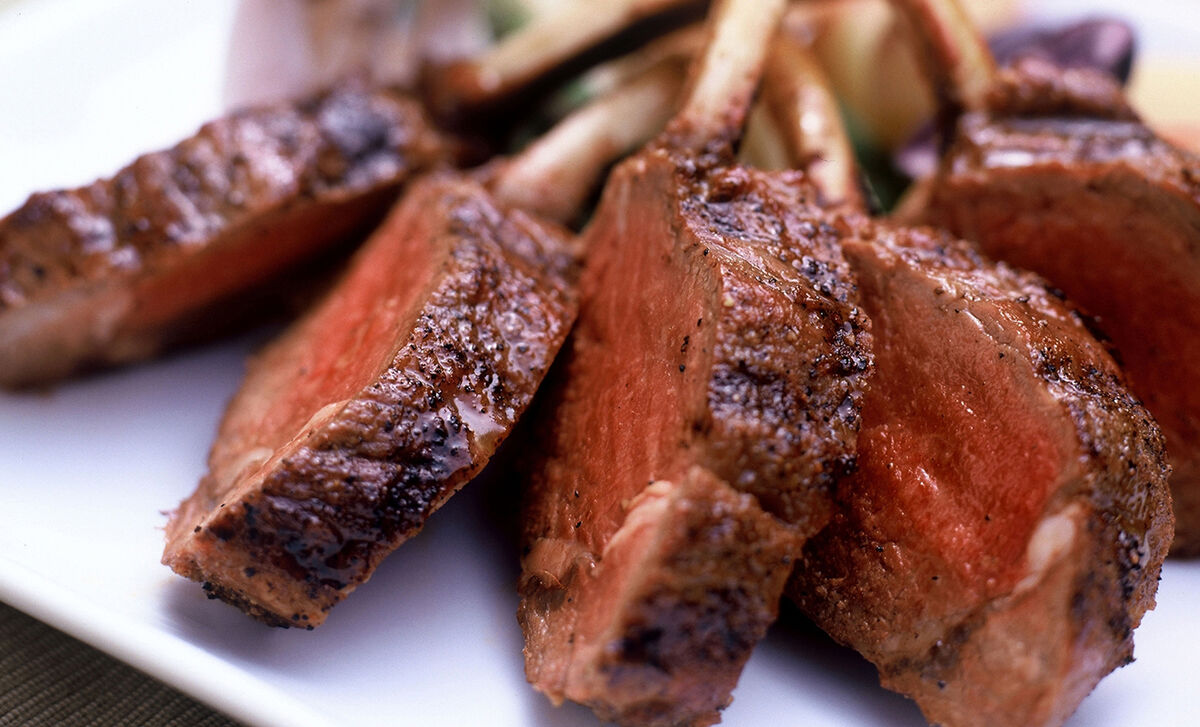
Best of Both Worlds
Pan-roasting is a hybrid method of cooking using both conductive heat (by searing) and radiant heat (by roasting). It works well with small roasts and portioned cuts of meat that are more than 1 inch thick such as racks, loins, chops, and thick steaks. One of the most efficient ways to cook these cuts, pan-roasting gives them a flavorful crust that seals in juices while reaching the perfect temperature at the center. If you just seared a rack of lamb, the outside would be tough and dry by the time the center reached temperature. Adversely, if you just roasted the rack, you'd miss out on that wonderful caramelization which gives the lamb that extra dimension of flavor. By pan-roasting, you get the best of both worlds.
Equip Yourself
For pan-roasting in general you need a shallow pan that will go from stove-top to oven, with an oven-safe handle. If you'd like to make a delicious (and easy!) pan-sauce, the pan cannot be the teflon/non-stick type. A cast iron skillet is an ideal choice as it holds on to heat well, as is heavy-gauge stainless steel for its conductive properties. Your pan should be large enough to accommodate your cut of meat without it touching the sides – if the pan is too small you risk 'steaming' rather than searing. An oven mitt and tongs are also pan-roasting must-haves!
Hot, Hot, Hot!
Heat is the key component to pan-roasting. We'd suggest taking your meat out of the refrigerator at least 15 minutes before you're going to cook. Preheat your oven to the desired temperature, most recipes call for 350-450 degrees F for pan-roasting, and pre-heat your skillet until a drop of water dances on the surface before evaporating. Once hot, a light slick of duck fat, oil, or a mix of butter and oil can be used if needed. When your meat hits the pan, you should hear that tell-tale sizzle.
Now Leave it Alone!
The way to achieve that rich, golden crust is to leave the meat alone. We know it's tempting – but don't fuss with it! Once you have a nice even sear, carefully turn the meat using tongs and slip the pan into the hot oven. Set your timer for desired doneness and leave the oven door closed until it's time to take the pan out. Once your meat is at the desired temperature, gingerly move it to a cutting board to rest for 10 minutes. All of that heat has caused the meat to seize up and the natural juices to retreat to the center of the cut so by letting the meat rest, you allow the muscle fibers to relax and those wonderful juices will redistribute.
Pan-Sauce 101
While your meat is resting, take advantage of the fond, those meaty bits left in the skillet and make a rich, shimmering pan-sauce. With your pan over medium-high heat, deglaze with the liquid of your choice – stock, demi-glace and wine (or a combination) all work well – and scrape up those tasty little tidbits. Reduce the liquid, taste for seasoning and add fat to round it out, butter is classic but a splash of cream or a dollop of crème fraiche are tasty too! Drizzle your sauce over the plated meat and enjoy!
